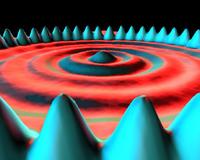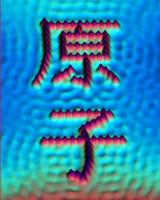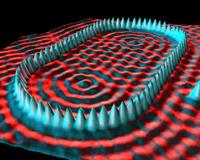 In the exciting world of Yang today, I realized that my idea to dye my curtains orange was a good one. Yes, I really did dye my curtains. You see, when I moved in the windows in my room were these dirty, broken down dog hair (and maybe cat hair) covered monstrosities. I think they were supposed to be roman curtains, but if so they were definitely curtains from the period AFTER Rome was sacked by the Vandals.
In the exciting world of Yang today, I realized that my idea to dye my curtains orange was a good one. Yes, I really did dye my curtains. You see, when I moved in the windows in my room were these dirty, broken down dog hair (and maybe cat hair) covered monstrosities. I think they were supposed to be roman curtains, but if so they were definitely curtains from the period AFTER Rome was sacked by the Vandals. A couple of days after I moved in, I took them down, washed them and "re-strung" them. They were perfectly serviceable after that, if nothing fancy. While in the middle of this I hit on the idea of using that RIT dye you can buy at the craft store to dye my curtains and give my room a little bit of color. Like most rentals, the place I live in suffers from the "Tyranny of White." So, I went out and bought myself a couple of boxes of orange dye and dyed the suckers. I wasn't sure if I had made the right choice in terms of colors at first, but now that I've had time to get used to it, I know that I did. My room looks COOL when I wake up in the morning and when I get home in the late afternoon. Sunlight that filters through my windows when the curtains are closed makes my room glow orange. It's really neat.
A couple of days after I moved in, I took them down, washed them and "re-strung" them. They were perfectly serviceable after that, if nothing fancy. While in the middle of this I hit on the idea of using that RIT dye you can buy at the craft store to dye my curtains and give my room a little bit of color. Like most rentals, the place I live in suffers from the "Tyranny of White." So, I went out and bought myself a couple of boxes of orange dye and dyed the suckers. I wasn't sure if I had made the right choice in terms of colors at first, but now that I've had time to get used to it, I know that I did. My room looks COOL when I wake up in the morning and when I get home in the late afternoon. Sunlight that filters through my windows when the curtains are closed makes my room glow orange. It's really neat.In a funny bit of serendipity, I was thinking about how I hadn't talked to Marty Durham since right before I moved to California. Oddly enough, a package arrives from him today containing exciting new D&D stuff. He sent me two new books (Magic of Ebberon and Heroes of Horror) and a pile of miniatures. I definitely have to call him. I now have so many Ebberon source books that I think I definitely need to run an Ebberon game at some point. Strangely, my Ebberon book about the city Sharn is missing. I have no idea where it is. I must've left it behind during the move.
 So yeah, that's the world of Yang today. In the world of Yin, I'm seriously working hard to stay ahead on the homework. I've actually made the effort to figure out the ratio of homework problems to days until due so that I can prioritize a bit in terms of what to do when I have time to study. Of course, sometimes it's hard to gauge how long it will take you to do any given problem.
So yeah, that's the world of Yang today. In the world of Yin, I'm seriously working hard to stay ahead on the homework. I've actually made the effort to figure out the ratio of homework problems to days until due so that I can prioritize a bit in terms of what to do when I have time to study. Of course, sometimes it's hard to gauge how long it will take you to do any given problem.For example, take my most recent mass transfer problem. I started in on Sunday. I just finished it. Normally homework problems don't take me this long. Believe me. It was "teh suck." And you know what's worse? This was technically an EASY problem to solve. Part of what made the problem so difficult was that I had literally never been taught anything on how one goes about solving a linear second order partial differential equation. To make it all the more frustrating, when some of the students queried him about the problem, the professor acted as if it was something we should have been taught how to solve during out undergraduate years, preferably in our Sophomore year of school.
 Personally, I think he's bullshitting us. I have it on good authority (Suzanne's) that a problem similar to this is handed out to graduate schools all across the country during the first weeks of the first term. It's sort of a "wake-up" call to new graduate students that the world of straightforward homework assignments was dead and gone. Of course, I think she's making a rather large generalization using a relatively small set of data, but I'd rather believe her theory than the theory that I'm undereducated when compared to "average" graduate students. Besides, I did some checking and none of the grad students in my class that I talked to remembered ever being taught how to solve something like this. I also looked at my old undergraduate textbooks and saw that they also didn't contain any relevant solutions. So yeah. I think is was a set-up. But whatever, CUZ I SOLVED THAT BITCH!!! It's pretty. If you're lucky I'll scan it in and you can see it.
Personally, I think he's bullshitting us. I have it on good authority (Suzanne's) that a problem similar to this is handed out to graduate schools all across the country during the first weeks of the first term. It's sort of a "wake-up" call to new graduate students that the world of straightforward homework assignments was dead and gone. Of course, I think she's making a rather large generalization using a relatively small set of data, but I'd rather believe her theory than the theory that I'm undereducated when compared to "average" graduate students. Besides, I did some checking and none of the grad students in my class that I talked to remembered ever being taught how to solve something like this. I also looked at my old undergraduate textbooks and saw that they also didn't contain any relevant solutions. So yeah. I think is was a set-up. But whatever, CUZ I SOLVED THAT BITCH!!! It's pretty. If you're lucky I'll scan it in and you can see it.Also, the cool pictures (at least I think they're cool) were found at a site where some geeky academic posted pictures he'd made with his Scanning Tunneling Microscope. Some of them you may have seen before. Basically, those little mountains you see are ATOMS and the little waves are fluctuations in the electron density of the material that the atoms are deposited on. To make these pictures, you use the STM probe tip to literally drag atoms across a surface one by one. Pretty cool, huh?

3 comments:
Well, so far I have an n of 2 and the theory holds.
Differential equations makes my head hurt.
I mean bad, like "Scanners" bad.
~ Charles
They make my head hurt too. What's funny is I was explaining to Scottland that one could use differential equations to describe the behavior of the rollercoaster we were looking at. Oddly enough, later that day I found a video simulation of a new rollercoaster ride on the internet. There's no way that you could create something like that without differential equations. At least, I don't think so.
Post a Comment